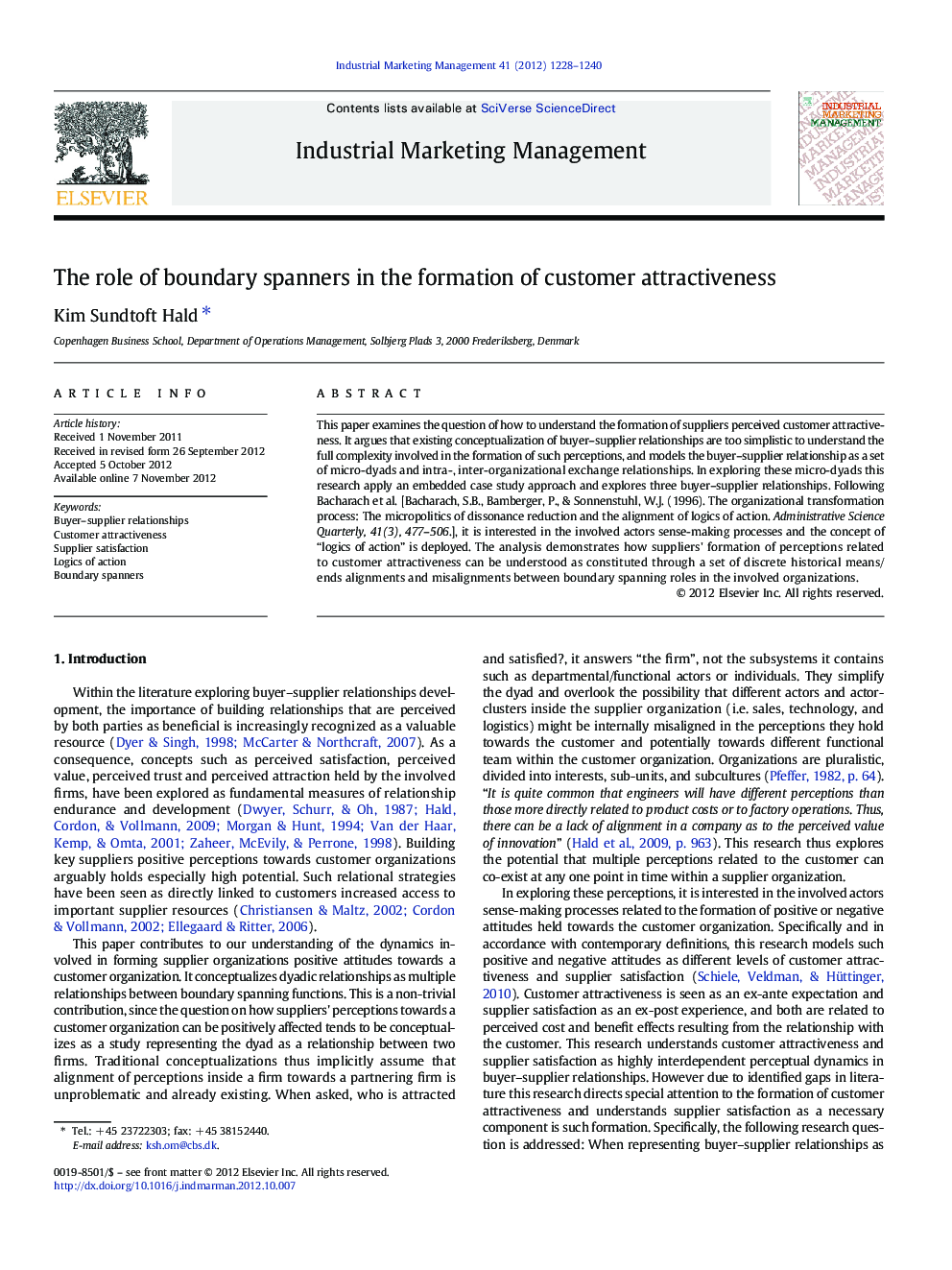| Article ID | Journal | Published Year | Pages | File Type |
|---|---|---|---|---|
| 1027715 | Industrial Marketing Management | 2012 | 13 Pages |
This paper examines the question of how to understand the formation of suppliers perceived customer attractiveness. It argues that existing conceptualization of buyer–supplier relationships are too simplistic to understand the full complexity involved in the formation of such perceptions, and models the buyer–supplier relationship as a set of micro-dyads and intra-, inter-organizational exchange relationships. In exploring these micro-dyads this research apply an embedded case study approach and explores three buyer–supplier relationships. Following Bacharach et al. [Bacharach, S.B., Bamberger, P., & Sonnenstuhl, W.J. (1996). The organizational transformation process: The micropolitics of dissonance reduction and the alignment of logics of action. Administrative Science Quarterly, 41(3), 477–506.], it is interested in the involved actors sense-making processes and the concept of “logics of action” is deployed. The analysis demonstrates how suppliers' formation of perceptions related to customer attractiveness can be understood as constituted through a set of discrete historical means/ends alignments and misalignments between boundary spanning roles in the involved organizations.
► This paper examines how to understand the formation of suppliers perceived customer attractiveness. ► This paper conceptualizes dyadic relationships as multiple relationships between boundary spanning functions. ►This paper contributes by developing a typology of miss-alignments in buyer–supplier relationships. ► Highlights how a few major historical events can be understood as being highly influential in shaping supplier satisfaction ► Turnover of personnel seems to be very detrimental to levels of supplier satisfaction.
